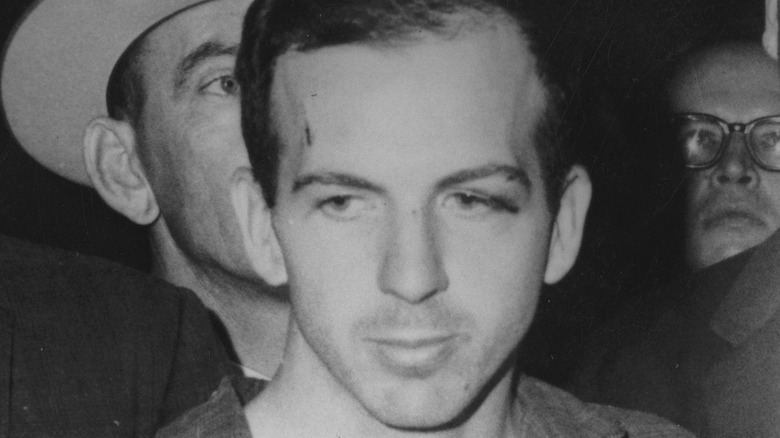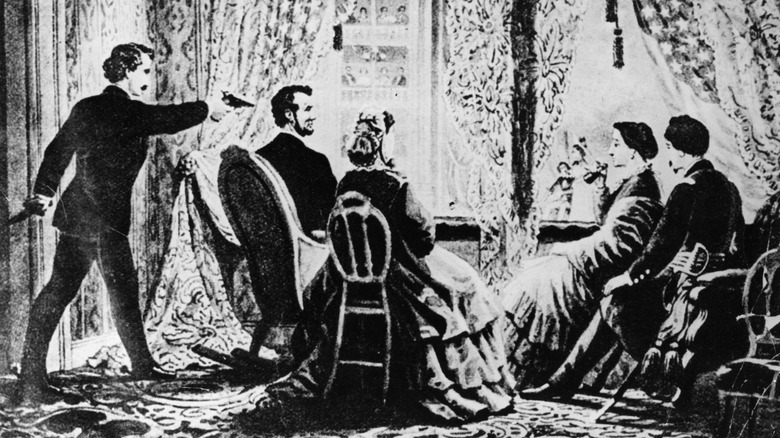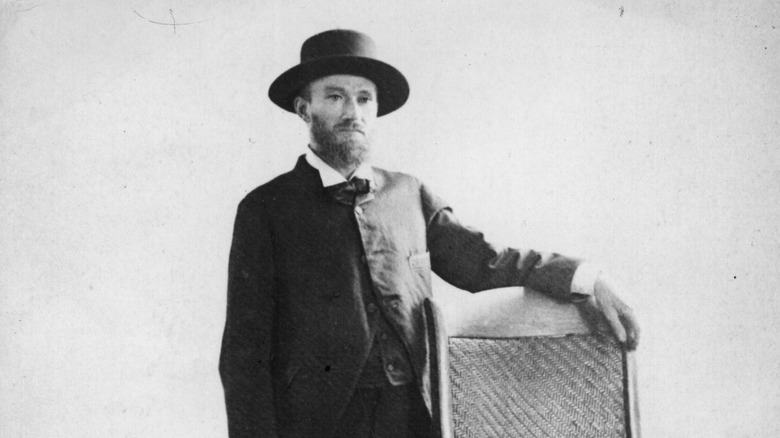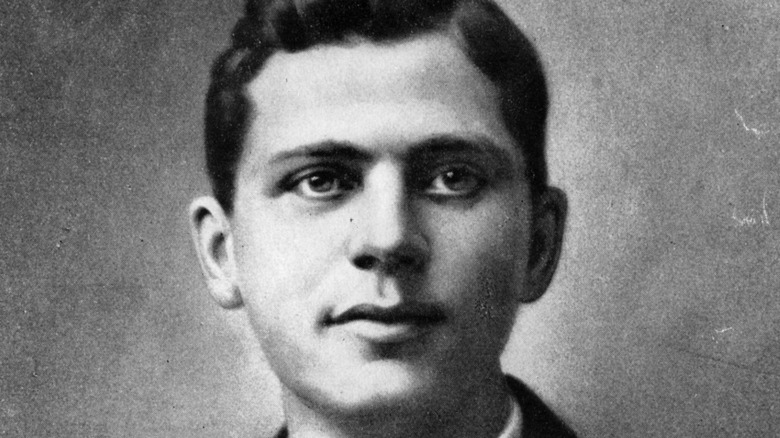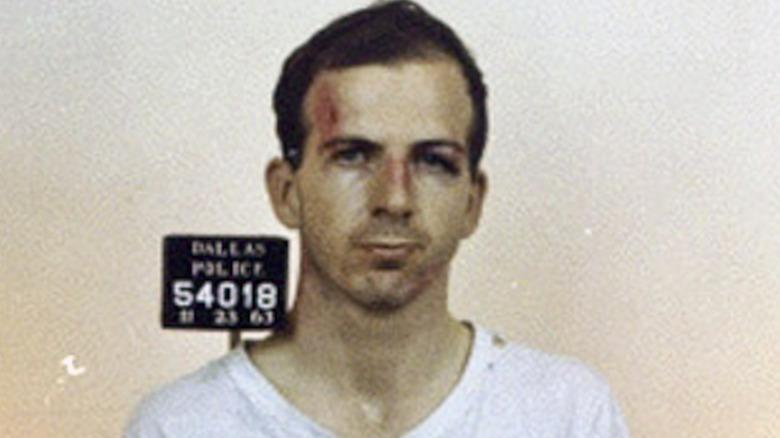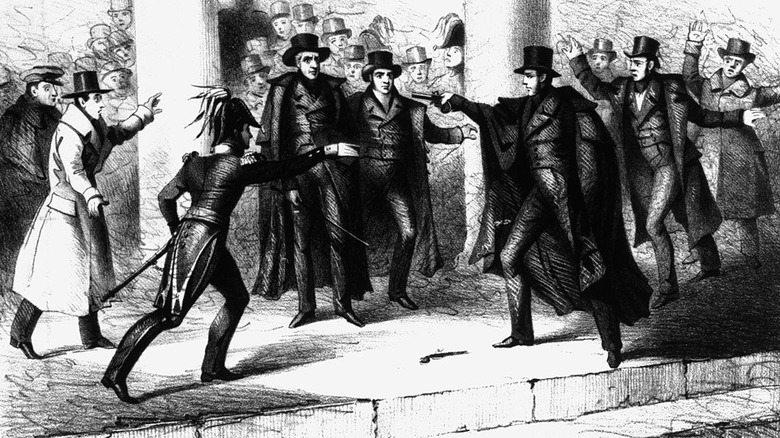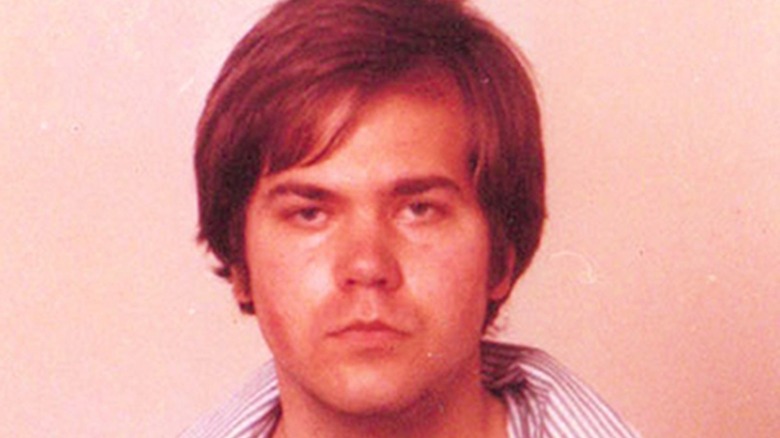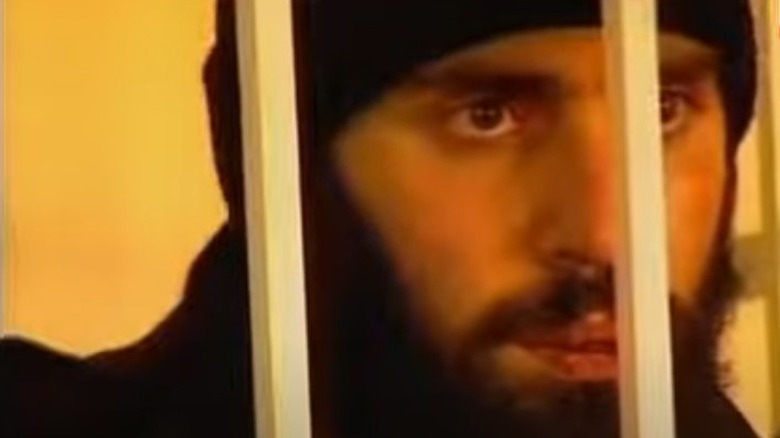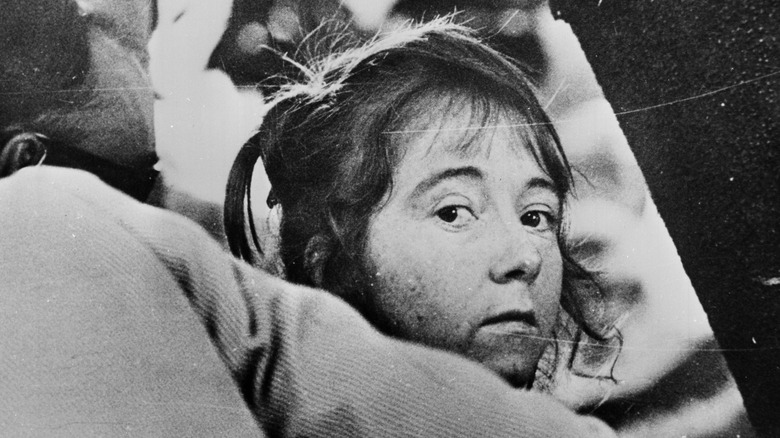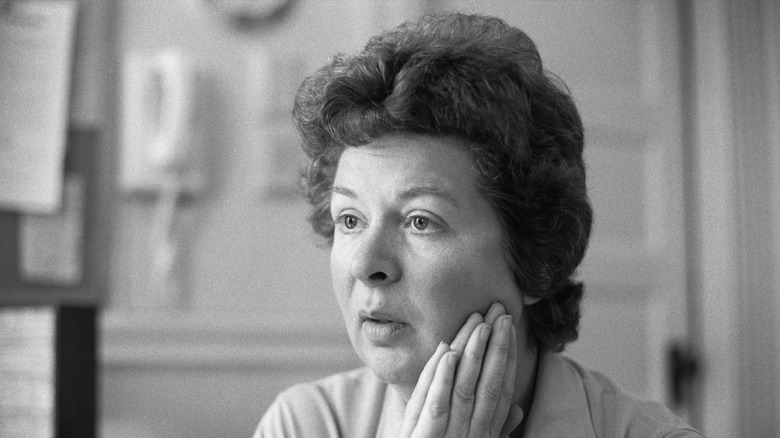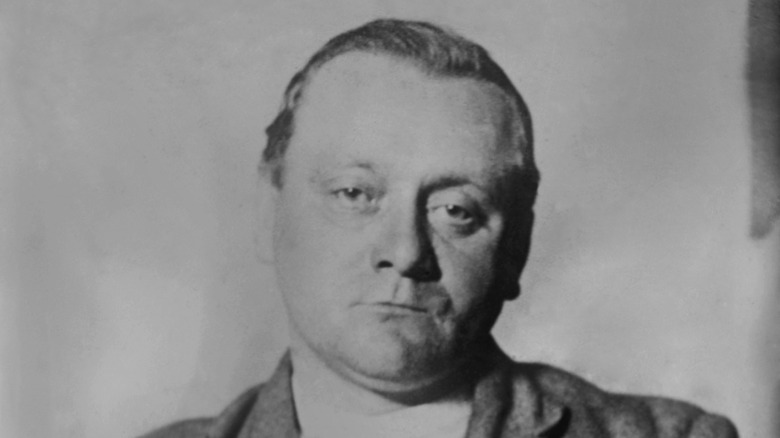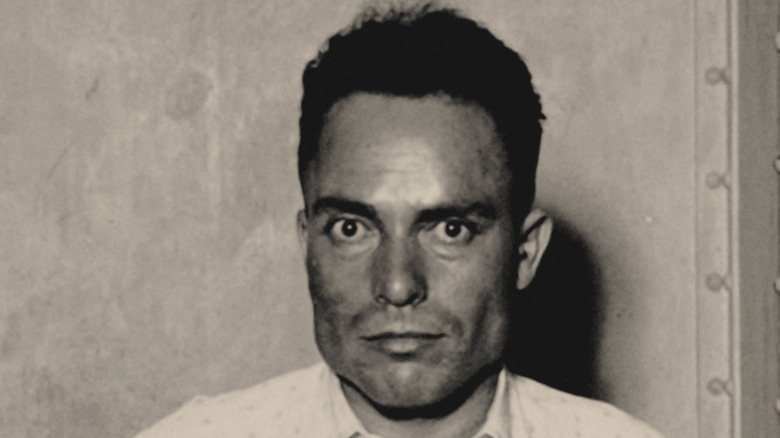What Happened To These Presidential Assassins?
Presidential assassinations do more than just kill one man. Throughout history, killing a president has had a significant impact on the political and socioeconomic environment of the country. For example, William McKinley's assassination led to the creation of the Secret Service, and Kennedy's death had a profound impact on the passing of the Civil Rights Act and the movement that came after (per History).
The actual presidential assassinations (or attempts) are linked to many reasons -– some ideological, some political, and some to less rational motivations. Although the attempted assassinations amount to over a dozen since George Washington took his oath as the first president of the newly-formed United States, only four U.S. presidents have actually lost their lives.
And speaking of George Washington, he could have ended up on this list. In 1776, Continental Army soldier Thomas Hickey was part of a plot to assassinate then-General George Washington — a plot that could have gone through, except that Hickey was arrested for an unrelated charge (counterfeiting) and proceeded to his cellmates about the plan to kill Washington. He was eventually court-martialed and then publicly hanged for treason (via Britannica).
For other presidents, however, things didn't work out so well.
John Wilkes Booth
In April 1865, Confederate sympathizer John Wilkes Booth assassinated Abraham Lincoln at Ford's Theatre. Booth was a successful actor (Lincoln actually saw him on the stage two years before his assassination), but was also an ardent supporter of slavery. He spent years building up hate directed at Lincoln for his work toward ending slavery and then announcing his intention of establishing voting rights for Blacks (per History).
Booth's original plan wasn't to kill Lincoln, but to kidnap him. In the end, Booth decided to kill Lincoln after finding out about the president's intention to attend a performance at Ford's Theatre and quickly organizing with his followers to kill both Lincoln and Secretary of State William Seward.
Seward survived that evening, but Lincoln was shot in the back of the head while watching the play from his private box. Booth then ran away and a large, multi-day manhunt that History describes as "one of the biggest in U.S. history, involving nearly 1,000 Union soldiers" ensued non-stop for nearly two weeks. Federal troops finally found Booth hiding in a tobacco farm in Virginia, according to History.
When he refused to surrender, he was shot by a soldier and died from his injuries hours later; his co-conspirators were arrested and later hanged. Booth was secretly buried in Washington, D.C., but his body was returned to his family years later to be buried in an unmarked grave.
Charles Guiteau
In July 1881, disgruntled lawyer Charles Guiteau shot President James A. Garfield twice inside a railroad station and then immediately surrendered. Guiteau had delusions that he deserved a spot in the presidential office because he'd written a speech during the campaign, and was furious when his requests for a post were ignored (per History).
Garfield lived for 80 days after the shooting, during which doctors tried over and over to remove the bullet lodged near his pancreas. At a time when germs were not understood, the doctors' insistence on digging into Garfield's body with unwashed hands and instruments led to an unstoppable infection (per Britannica).
Once Garfield was dead, Guiteau's defense attorneys on behalf of their client pleaded insanity to try to save him from the death penalty. In 1881, this was a bold move and one received with disdain by both the public and the highly-respected prosecution team, which included the District of Columbia's district attorney. It turns out that the prosecution didn't have to worry -– Guiteau insisted on defending himself and claimed he was not insane, then rambled about why the president had to die and how God told him to do it. The prosecution used this to claim that Guiteau's erratic behavior was simply an example of his great ego and that "such is the indescribable egotism of this man that he put himself on the same plane as the Savior of mankind and the prophets" (via Encyclopedia). And with that, Guiteau was found guilty and sentenced to death. Six months later, he was hanged.
Leon Czolgosz
Mill worker and anarchist Leon Czolgosz shot President William McKinley twice in September 1901 during a visit to the Pan-American Exposition. Czolgosz was obsessed with the disparity between workers and the wealthy and believed McKinley played a part in this disparity. McKinley lived for a week before dying of complications from his bullet wounds (via Britannica).
Czolgosz was arrested on the spot while trying to shoot the president a third time and his trial began just one week after the president's death (per History). According to Britannica, Czolgosz confessed right away, claiming that he "didn't believe one man should have so much service, and another man should have none." His trial lasted only eight hours and the jury only needed 30 minutes to decide he was guilty. On October 29, 1901, he was executed in the electric chair.
But Czolgosz's story doesn't end there. Enter Thomas Edison and his obsession with electrocution (in case you didn't know, Edison invented the electric chair). In what would end up being his "first electrocution film," Edison re-enacted Czolgosz's execution to the smallest horrifying detail, and while we know it's a faux-execution film, it's still very uncomfortable to watch. It has also preserved Czolgosz's name in history in a very unexpected way, as reported via Gizmodo.
Lee Harvey Oswald
No presidential assassination is more etched in people's memory than John F. Kennedy's in 1963. He was shot in November 1963 while riding the streets of Dallas in the back of an open convertible, and his death has been the subject of conspiracy theories for decades (per Britannica).
Kennedy was the only president shot from a distance using a rifle and telescopic sight, which meant there were no witnesses. The shot came from the sixth floor of the Texas School Book Depository, where pro-Soviet radical Lee Harvey Oswald worked, as explained via Britannica. Oswald was arrested later the same day after shooting a Dallas policeman, but he vehemently denied killing Kennedy.
Two days after Kennedy's death, Oswald was shot and killed by nightclub operator Jack Ruby while in custody at Dallas' police headquarters. As a result, Oswald was never tried for the assassination. The Warren Commission, created to look into the assassination, eventually determined that Oswald had acted alone, even though initial findings indicated that there was possibly a second shooter near the motorcade.
The Commission was eventually able to trace the rifle from the sixth floor to an alias used by Oswald, as well as to connect handwriting and a palmprint found on the rifle to Oswald, confirming his guilt in the assassination and closing the case (via National Archive's JFK Assassination Records).
Richard Lawrence
Back in January 1835, Andrew Jackson could have been the first president to be assassinated in office, but it was definitely his lucky day. That's because unemployed painter Richard Lawrence failed to shoot him twice — both of the guns Lawrence was carrying misfired (per History).
Although Jackson was in poor health, he used his cane to beat Lawrence to the ground until people at the scene intervened and secured Lawrence. It turns out Lawrence was obviously delusional and believed not only that he was meant to be the next king of England, but also that Jackson was preparing to take the throne away from him. Jackson doubted the claim and suspected a conspiracy, but investigations turned out nothing, as reported via the United States Senate website.
In a paper published in The Bulletin of the American Academy of Psychiatry and the Law, Yale University Professor Howard Zonana pointed out that in 1835, an attempt to shoot somebody (without actually causing any harm) was not a major offense. Legally, Lawrence could have gotten away with just a fine and a short prison term, but by the time his trial came around, it was obvious to the examining physicians that Lawrence was insane. In the end, Lawrence was committed to a mental institution, where he lived until his death.
John Hinckley Jr.
In March 1981, John Hinckley Jr. shot President Ronald Reagan for one of the strangest reasons ever: He wanted to impress actress Jodie Foster.
John Hinckley Jr., who had once dreamed of becoming a songwriter, was obsessed with the movie "Taxi Driver" and one of its main characters played by Jodie Foster. After stalking her for a long time, he somehow convinced himself that the key to her heart was to kill the president (per History).
On the day he tried to kill Reagan, Hinckley even sent Foster a letter that explained "I will admit to you that the reason I'm going ahead with this attempt now is because I just cannot wait any longer to impress you" (as reported via The Washington Post). Later that day, he waited for Reagan to exit the Washington Hilton hotel and fired six times. He hit not only Reagan (the bullet entered the president's lung), but also his press secretary, a Secret Service agent, and a police officer (via The New York Times). Everybody survived.
Hinckley was arrested but found not guilty for reason of insanity and sent to a psychiatric facility. He expressed no remorse and eventually called the shooting "the greatest love offering in the history of the world" (per History). Despite attempting suicide twice, Hinckley was eventually allowed to leave the facility unsupervised to visit his parents, according to History. In June 2022, after 41 years in a psychiatric hospital, Hinckley was granted a full release. He's since announced that his intention is to pursue a music career, NPR reports.
Vladimir Arutyunian
In May 2005, President George W. Bush was overseas in Georgia when he was attacked. It happened in Tbilisi's Freedom Square, as Bush was beginning a speech in the company of the President of the Republic of Georgia, both countries' first ladies, and a number of other dignitaries (via "In the Crosshairs: Famous Assassinations and Attempts from Julius Caesar to John Lennon" by Stephen Spignesi).
Luckily for everybody, the grenade that Georgian national Vladimir Arutyunian threw toward the podium failed to detonate — partly because he had been hiding it under a handkerchief, which tangled up in the firing pin and prevented it from fully deploying. Arutyunian fled the scene and wasn't captured until July, thanks to the combined effort of the FBI's overseas office and Georgian authorities. During the arrest, he managed to shoot and kill a Georgian police officer (via the FBI archives).
It's unclear how well Arutyunian had planned the attack, as the presidents were standing behind bulletproof glass and the grenade would have likely bounced on the glass or caused little injury to them even if it exploded against it. Arutyunian's reasons for the attack are also a bit unclear beyond the fact that he claimed to hate both presidents. He initially confessed but then pleaded not guilty -– but it was pointless. In January 2006, he was sentenced to life in prison without the possibility of parole, according to "In the Crosshairs."
Lynette Squeaky Fromme
One of the strangest attempts to assassinate a president happened in December 1975, when Lynette "Squeaky" Fromme tried to kill President Gerald R. Ford. What was the strangest thing of all? Fromme was a member of Charles Manson's cult — but that's not why she showed up at a public event in California with a gun. Her reasons, she explained, were innocent. She just wanted to talk about the plight of the Californian Redwood trees and maybe get a second trial for Manson, and thought the only way Ford would listen to her was if she brought a gun with her for attention. Secret Service agents had Fromme on the ground before she could even point it directly at the president. She was sentenced to life in prison, with an extra 15 years added for a brief escape from prison in 1987 (as reported via Oxygen).
Fromme remained in touch with Manson throughout her entire time in prison, referring to him as a "once-in-a-lifetime soul," (via Newsweek). Despite her life sentence, she was eventually released on parole in 2009 and has led a quiet life since then, though in 2019 she told ABC "Nightline" that she was still in love with Charles Manson adding that, "I don't think you fall out of love." Since her release, Fromme has published a book (the memoir, "Reflexion" in 2018) and moved to Marcy, New York, where she lives with her boyfriend.
Sara Jane Moore
Just 17 days after the incident with Fromme, another woman pointed a gun toward President Gerald Ford. Sara Jane Moore waited outside a hotel in California for Ford to leave, then fired at him but missed. Somebody in the crowd grabbed her before Secret Service agents jumped in and arrested her. Moore was a mom of four and a former FBI informant with a deep disdain for the political establishment (via History).
Investigative reporter Geri Spieler, who spent 20 years talking to Moore and wrote the book, "Taking Aim at the President: The Remarkable Story of the Woman Who Shot at Gerald Ford," quotes Moore as saying "I'm not sorry I tried ... if successful, the assassination ... just might have triggered the kind of chaos that could have started the upheaval of change." Moore was sentenced to life in prison, but was eventually released on parole in 2007 — just two years before Fromme was released (via San Francisco Gate).
Moore has kept a low profile since then, but in 2019, the 89 year old was rearrested for breaking her parole, which required her to inform her parole officer before traveling abroad. Moore was returning from Israel when she was arrested at the airport, as reported by Fox News.
John Schrank
In October 1912, John Flammang Schrank shot Theodore Roosevelt (via Theodore Roosevelt Center) as he was leaving his hotel and on his way to deliver a speech. The bullet broke a rib and ended up getting lodged in his chest. The shot could have been deadly if not for Roosevelt's overcoat pockets, which were filled with a thick manuscript and a metal eyeglass case, both of which slowed down the bullet and minimized the damage. Roosevelt actually went on to give his speech before agreeing to go to the hospital, where he spent one week being cared for by doctors (via Library of Congress).
Schrank was arrested on the spot, after which police officers discovered a letter on him. According to the Theodore Roosevelt Center, the letter gave two reasons for the attempted assassination: Schrank didn't want Roosevelt to stay in office, and he'd had a dream where President McKinley told him Roosevelt was responsible for his death and he needed to be punished.
After Schrank was declared incompetent to stand trial and diagnosed with paranoid schizophrenia, authorities committed him to an asylum, where he spent the rest of his life. He died of bronchial pneumonia in 1943 and his obituary, published in Time magazine in 1943, pointed out he never received any visitors during his 29 years at the hospital.
Giuseppe Zangara
In 1933, more than two decades after the first attempt, a Roosevelt was shot at again -– but this time no bullets hit their primary target, Franklin D. Roosevelt.
The shooter was Giuseppe Zangara, a laborer angry at the dire financial situation many (including himself) were in during the Great Depression. He even shouted, "Too many people are starving" as he fired several shots. Of the five people injured, one would eventually die — the mayor of Chicago, Anton Cermak. Zangara was grabbed and beaten by several people at the scene and eventually arrested and taken to jail (via History). It turns out that the reason the bullet had not struck Roosevelt was because Mrs. W.F. Cross, a local woman who saw the gun, managed to grab Zangara's arm and move it upward to ensure he wouldn't hit his target (as reported by United Press International, Inc.).
After being sentenced to prison for attempted murder, Zangara was retried for killing Cermak and sentenced to death. As he sat on the electric chair for his execution in March 1933, Zangara started screaming, "All capitalists! Lousy bunch! Crooks!" However, he offered no resistance at any point, as reported by The Woodville Republican in 1933. He died minutes later and an autopsy was ordered, after which the attending physicians declared Zangara's brain was "perfectly normal."
